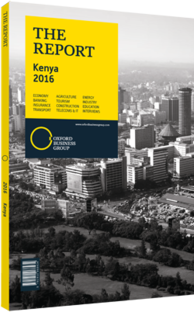Kenya's horticulture segment creates opportunities
A powerhouse export segment and major engine for the agriculture sector, Kenyan horticulture has made enormous strides in recent years, despite an increasingly challenging and complex regulatory landscape in its key market, the EU. While production and export volumes rose in 2014, profits in some segments contracted as a result of currency fluctuations. Yet ongoing value-addition initiatives, coupled with the renewal of a critical bilateral agreement with the EU, should see the sector’s performance improve in 2015.
Recent Growth
According to the Kenya National Bureau of Statistics, horticultural export volumes increased by nearly 3% to reach 220,200 tonnes in 2014. Earnings from exports of fresh produce hit KSh84.1bn ($925.1m), a rise of around KSh700m ($7.7m) over 2013 and driven by a 12.5% spike in fruit export revenues, which reached KSh5.4bn ($59.4m). Earnings from vegetables, however, fell nearly 18% to KSh18.8bn ($206.8m), despite higher volumes.
European Markets
Rising quality control standards have meanwhile affected the industry. In October 2014 horticulture exporters were concerned to learn that Kenya’s 30-year economic partnership agreement (EPA) with the EU had not been renewed, as officials continued to negotiate issues such as taxation, good governance and subsidies. EU-bound exports were instead subject to tariffs under the Generalised System of Preferences, which range from 4% to 24% and apply to some 67% of goods flowing from Kenya to Europe. The EU had earlier set a September 30, 2014 deadline for Kenya to cut the amount of chemical residue in all EU-destined produce exports, promising to introduce stricter inspections.
Swift Response
The sector responded swiftly to the new rules. The Ministry of Agriculture, Livestock and Fisheries moved to ban the use of two unspecified chemicals on farms and hired new inspectors to ensure compliance with EU standards; such reforms are ongoing. In July 2015 the Kenya Bureau of Standards also passed stricter safety regulations for the flower industry in a bid to reduce exposure to EU-banned chemicals. “Vegetable exports fell because of this new inspection requirement, which has cost the industry up to $30m, but the inspections yielded positive results, mainly thanks to good collaboration between the private and public sectors,” Steve New, director of the USAID-funded Kenya Agricultural Value Chain Enterprises Project, told OBG.
Reversals
As a result of such reforms, the industry regained duty- and quota-free export privileges to the EU, and in January 2015 the EPA was ratified. Besides supporting faltering vegetable exports, the EPA will bolster Kenya’s critically important cut-flower industry, which has about a 30% global market share and is its third-largest source of foreign currency, according to Bloomberg. The Kenya Flower Council (KFC) projected cut-flower shipments would grow by 8% to reach 130,000 tonnes in 2015, reaping $546m in export earnings, as a result of the renewed EPA.
Currency Instability
Despite the improvements in quality control, currency volatility remains a challenge to the industry. In June 2015 the KFC reported that the fall in the shilling-euro exchange rate from KSh120:€1 to KSh100:€1 over the course of the year had hurt export earnings from the EU, while shilling depreciation against the US dollar, used to buy many horticultural inputs, has driven production costs to unsustainable levels. “The declining shilling and rising interest rates will cause a credit squeeze in the agriculture sector, as Kenyan banks will be less willing to lend to sectors perceived as high-risk,” Sammy Lang’at, CEO of Transnational Bank, told OBG. Currency drops and sector growing pains thus saw revenues contract in the first quarter of 2015: cut-flower earnings fell by KSh1.03bn ($11.3m) to KSh19.01bn ($209.1m) and vegetable revenues by KSh200m ($2.2m) to KSh4.4bn ($48.4m), though fruit exports rose by KSh160m ($1.8m) to KSh1.38bn ($15.2m).
You have reached the limit of premium articles you can view for free.
Choose from the options below to purchase print or digital editions of our Reports. You can also purchase a website subscription giving you unlimited access to all of our Reports online for 12 months.
If you have already purchased this Report or have a website subscription, please login to continue.

